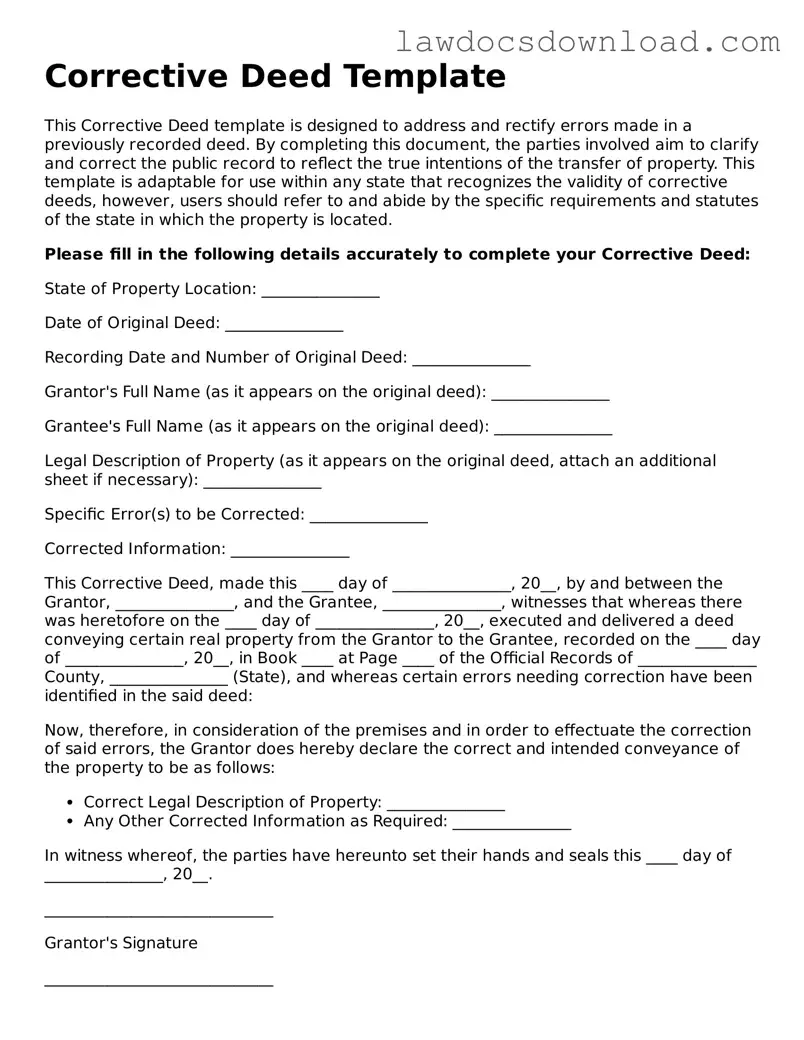Corrective Deed Template
This Corrective Deed template is designed to address and rectify errors made in a previously recorded deed. By completing this document, the parties involved aim to clarify and correct the public record to reflect the true intentions of the transfer of property. This template is adaptable for use within any state that recognizes the validity of corrective deeds, however, users should refer to and abide by the specific requirements and statutes of the state in which the property is located.
Please fill in the following details accurately to complete your Corrective Deed:
State of Property Location: _______________
Date of Original Deed: _______________
Recording Date and Number of Original Deed: _______________
Grantor's Full Name (as it appears on the original deed): _______________
Grantee's Full Name (as it appears on the original deed): _______________
Legal Description of Property (as it appears on the original deed, attach an additional sheet if necessary): _______________
Specific Error(s) to be Corrected: _______________
Corrected Information: _______________
This Corrective Deed, made this ____ day of _______________, 20__, by and between the Grantor, _______________, and the Grantee, _______________, witnesses that whereas there was heretofore on the ____ day of _______________, 20__, executed and delivered a deed conveying certain real property from the Grantor to the Grantee, recorded on the ____ day of _______________, 20__, in Book ____ at Page ____ of the Official Records of _______________ County, _______________ (State), and whereas certain errors needing correction have been identified in the said deed:
Now, therefore, in consideration of the premises and in order to effectuate the correction of said errors, the Grantor does hereby declare the correct and intended conveyance of the property to be as follows:
- Correct Legal Description of Property: _______________
- Any Other Corrected Information as Required: _______________
In witness whereof, the parties have hereunto set their hands and seals this ____ day of _______________, 20__.
_____________________________
Grantor's Signature
_____________________________
Grantee's Signature
State of _______________
County of _______________
On this, the ____ day of _______________, 20__, before me, a notary public, personally appeared _______________, known to me (or satisfactorily proven) to be the person(s) whose name(s) is/are subscribed to the within instrument and acknowledged that he/she/they executed the same for the purposes therein contained.
In witness whereof, I hereunto set my hand and official seal.
_____________________________
Notary Public Signature
My Commission Expires: _______________
